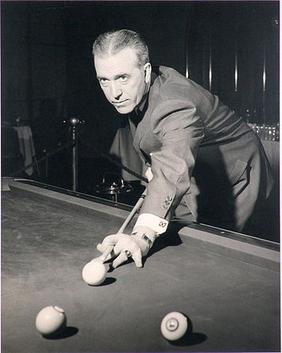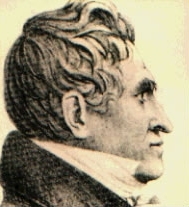
Ronald Linn Rivest is a cryptographer and computer scientist whose work has spanned the fields of algorithms and combinatorics, cryptography, machine learning, and election integrity. He is an Institute Professor at the Massachusetts Institute of Technology (MIT), and a member of MIT's Department of Electrical Engineering and Computer Science and its Computer Science and Artificial Intelligence Laboratory.
Computational geometry is a branch of computer science devoted to the study of algorithms which can be stated in terms of geometry. Some purely geometrical problems arise out of the study of computational geometric algorithms, and such problems are also considered to be part of computational geometry. While modern computational geometry is a recent development, it is one of the oldest fields of computing with a history stretching back to antiquity.

A billiard ball is a small, hard ball used in cue sports, such as carom billiards, pool, and snooker. The number, type, diameter, color, and pattern of the balls differ depending upon the specific game being played. Various particular ball properties such as hardness, friction coefficient, and resilience are important to accuracy.

Irving Crane, nicknamed "the Deacon", was an American pool player from Livonia, New York, and ranks among the stellar players in the history of the sport. Widely considered one of the greatest pool players of all time, and a member of the Billiard Congress of America Hall of Fame, he is best known for his mastery in the game of straight pool at which he won numerous championships, including six World Straight Pool Championship titles.
Franco P. Preparata is a computer scientist, the An Wang Professor, Emeritus, of Computer Science at Brown University.

Godfried Theodore Patrick Toussaint was a Canadian computer scientist, a professor of computer science, and the head of the Computer Science Program at New York University Abu Dhabi (NYUAD) in Abu Dhabi, United Arab Emirates. He is considered to be the father of computational geometry in Canada. He did research on various aspects of computational geometry, discrete geometry, and their applications: pattern recognition, motion planning, visualization, knot theory, linkage (mechanical) reconfiguration, the art gallery problem, polygon triangulation, the largest empty circle problem, unimodality, and others. Other interests included meander (art), compass and straightedge constructions, instance-based learning, music information retrieval, and computational music theory.

In computational geometry, the method of rotating calipers is an algorithm design technique that can be used to solve optimization problems including finding the width or diameter of a set of points.
Michael Athans was a Greek-American control theorist and a Professor Emeritus in the Department of Electrical Engineering and Computer Science at the Massachusetts Institute of Technology. He was a Fellow of the IEEE (1973) and a Fellow of the AAAS (1977). He was the recipient of numerous awards for his contributions in the field of control theory. A pioneer in the field of control theory, he helped shape modern control theory and spearheaded the field of multivariable control system design and the field of robust control. Athans was a member of the technical staff at Lincoln Laboratory from 1961 to 1964, and a Department of Electrical Engineering and Computer Science faculty member from 1964 to 1998. Upon retirement, Athans moved to Lisbon, Portugal, where he was an Invited Research Professor in the Institute for Systems and Robotics, Instituto Superior Técnico where he received a honoris causa doctorate from the Universidade Técnica de Lisboa in 2011.

Captain François Mingaud was an infantry officer in the French army and a carom billiards player. He is credited as the inventor of the leather tip for a billiards cue, a "possibly not original idea" that he perfected while imprisoned in Bicêtre for political outspokenness. This revolutionized the game of billiards, allowing the cue ball to be finely manipulated by the application of spin.
In computing, especially computational geometry, a real RAM is a mathematical model of a computer that can compute with exact real numbers instead of the binary fixed point or floating point numbers used by most actual computers. The real RAM was formulated by Michael Ian Shamos in his 1978 Ph.D. dissertation.
Michael John Fischer is an American computer scientist who works in the fields of distributed computing, parallel computing, cryptography, algorithms and data structures, and computational complexity.
Robert Kozma is First Tennessee University Professor of Mathematics at the University of Memphis.
Ian Robertson Porteous was a Scottish mathematician at the University of Liverpool and an educator on Merseyside. He is best known for three books on geometry and modern algebra. In Liverpool he and Peter Giblin are known for their registered charity Mathematical Education on Merseyside which promotes enthusiasm for mathematics through sponsorship of an annual competition.

Károly Bezdek is a Hungarian-Canadian mathematician. He is a professor as well as a Canada Research Chair of mathematics and the director of the Centre for Computational and Discrete Geometry at the University of Calgary in Calgary, Alberta, Canada. Also he is a professor of mathematics at the University of Pannonia in Veszprém, Hungary. His main research interests are in geometry in particular, in combinatorial, computational, convex, and discrete geometry. He has authored 3 books and more than 130 research papers. He is a founding Editor-in-Chief of the e-journal Contributions to Discrete Mathematics (CDM).

Robert Leo Byrne was an American author and Billiard Congress of America Hall of Fame instructor of pool and carom billiards.

Sergei Tabachnikov, also spelled Serge, is a Russian mathematician who works in geometry and dynamical systems. He is currently a Professor of Mathematics at Pennsylvania State University.
Ferdinando 'Teo' Mora is an Italian mathematician, and since 1990 until 2019 a professor of algebra at the University of Genoa.









